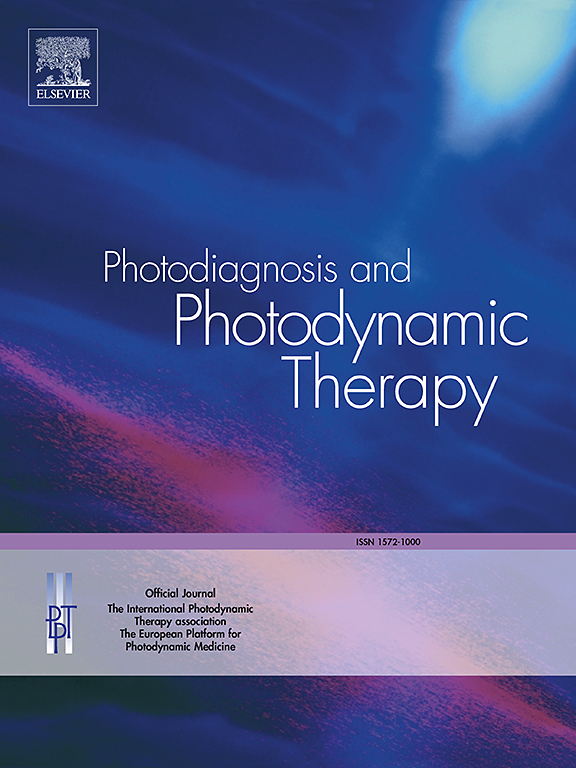血卟啉衍生物光动力疗法治疗阴茎疣状癌1例。
IF 3.1
3区 医学
Q2 ONCOLOGY
引用次数: 0
摘要
疣状癌是鳞状细胞癌的一种分化良好的低级别恶性肿瘤,通常与局部人乳头瘤病毒(HPV)感染和阴茎包皮过多有关。我们报告一位45岁的男性,他在阴茎头出现疣状斑块超过四个月,并伴有瘙痒。检查发现一疣状糜烂病灶,表面呈花椰菜样,质地坚硬,形状不规则,伴有疼痛、出血和恶臭。梅毒和艾滋病毒检测呈阴性,活检证实为疣状癌。患者在当地一家医院接受了最初的包皮环切术,但持续的病变引起了人们对进一步手术损害性功能和解剖完整性的担忧。为了保持解剖和功能的完整性,患者选择了血卟啉衍生物光动力疗法(HpD-PDT)。治疗后,病变消退,四年随访后,无瘢痕形成或复发。临床结果良好,病变完全消退。我们认为PDT是阴茎疣状癌的一种可行的治疗选择,在功能保存和美容效果方面比传统方法有优势。本文章由计算机程序翻译,如有差异,请以英文原文为准。
Photodynamic therapy with hematoporphyrin derivative for the treatment of penile verrucous carcinoma: A case report
Verrucous carcinoma, a well-differentiated variant of squamous cell carcinoma with low-grade malignancy, is often associated with localized human papillomavirus (HPV) infection and excessive penile foreskin. We report a 45-year-old male who presented with a verrucous plaque on the glans penis for over four months, along with itching. Examination revealed a verrucous, erosive lesion with a cauliflower-like surface, firm texture, and irregular shape, accompanied by pain, bleeding, and a foul odor. Syphilis and HIV tests were negative, and a biopsy confirmed verrucous carcinoma.The patient underwent initial circumcision at a local hospital, but persistent lesions raised concerns about further surgery impairing sexual function and anatomical integrity. To preserve both anatomical and functional integrity, the patient opted for Hematoporphyrin Derivative-Photodynamic Therapy (HpD-PDT). Post-treatment, the lesions regressed, and after four years of follow-up, there was no scarring or recurrence. The clinical outcome was favorable with complete lesion regression.We propose that PDT is a viable treatment option for penile verrucous carcinoma, offering advantages over traditional methods in terms of function preservation and cosmetic outcomes.
求助全文
通过发布文献求助,成功后即可免费获取论文全文。
去求助
来源期刊

Photodiagnosis and Photodynamic Therapy
ONCOLOGY-
CiteScore
5.80
自引率
24.20%
发文量
509
审稿时长
50 days
期刊介绍:
Photodiagnosis and Photodynamic Therapy is an international journal for the dissemination of scientific knowledge and clinical developments of Photodiagnosis and Photodynamic Therapy in all medical specialties. The journal publishes original articles, review articles, case presentations, "how-to-do-it" articles, Letters to the Editor, short communications and relevant images with short descriptions. All submitted material is subject to a strict peer-review process.
 求助内容:
求助内容: 应助结果提醒方式:
应助结果提醒方式:


